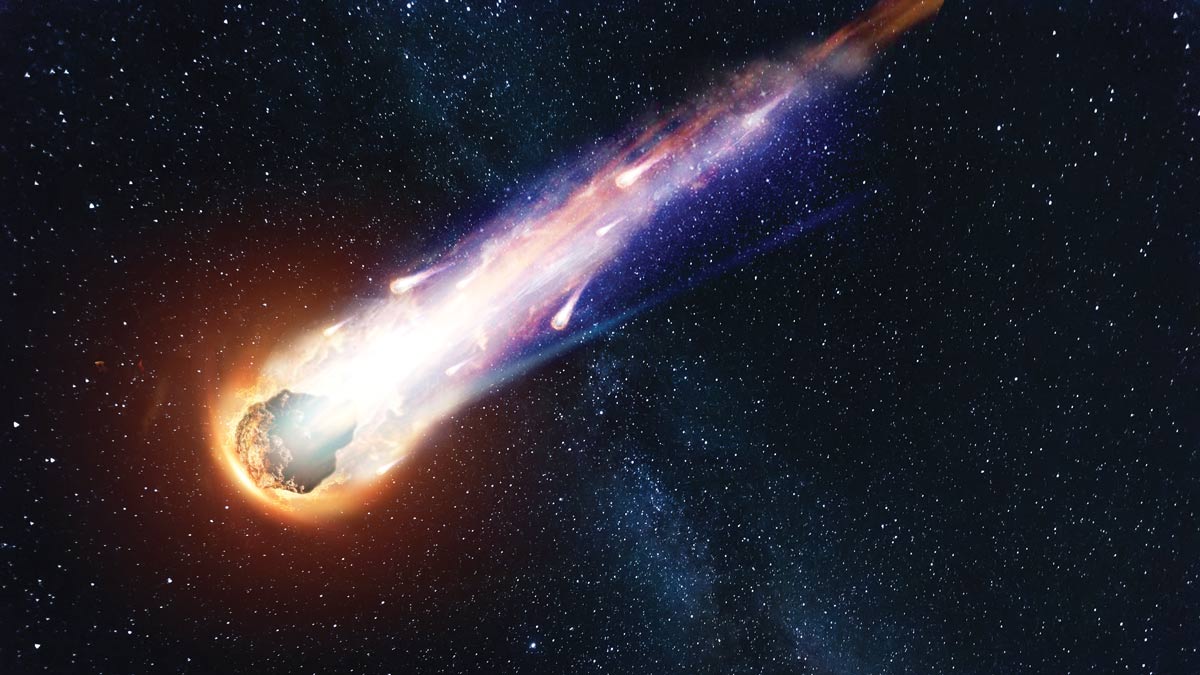A divine enigma—is it the first advent of Christ or the assembly of 144,000?
In the shimmering waters of the Pacific, among the idyllic islands of Papua New Guinea, Vanuatu, the Solomon Islands and Fiji, a peculiar storm is brewing within the community of Seventh-day Adventists. Shadowy factions, declaring themselves true Adventists, are weaving intricate webs of deception. Like mariners lured by the siren’s call, these groups tirelessly beckon church members toward what they dub the ”Stone Kingdom” heresy—now appearing in not one but two beguiling variations.
I first stumbled upon these theological mirages back in the early ’80s. Even then, their elusive allure was a topic of whispered conversations and cautionary tales among the faithful. These heresies, age-old yet newly polished, have now returned to haunt the spiritual landscape of the Pacific region. The question lingers: Will the community discern the storm on the horizon and navigate safely, or will they be drawn into the eye of confusion?
The Stone Kingdom and the first coming of Jesus Christ
In an age-old tapestry woven since the days of the apostles, a curious pattern emerges—a revisionist tale that seeks to redefine the very core of Christian belief. It’s as if Peter himself is leaning over our shoulders, whispering a warning about those who would scoff at the idea of Christ’s return (2 Peter 3:3,4). This modern myth takes a preterist stance, contending that the Stone Kingdom of Daniel 2 was fully realised during Jesus’ first arrival on Earth. It posits that Christ’s second coming is a mere illusion—He abides with us now solely through His Holy Spirit.
It’s a storyline that seeks to interpret the earth-shattering
stone of Daniel’s vision—once merely striking an image but growing to fill the entire Earth—as nothing more than a metaphor for God’s kingdom of grace, His church in these last days (Daniel 2:35,44). Yet, this theological twist stands at odds with the resounding promise of Jesus Himself: “I will come again” (John 14:3). It disregards Christ’s cautionary note to distrust any who point and say, “Look, here is the Christ!” (Matthew 24:23 NKJV).
It’s not as if Jesus’ return is a quiet affair to be easily overlooked or mistaken. Scripture paints a vivid tableau of a brilliant, sonic and awe-inspiring spectacle (Matthew 24:31; 1 Thessalonians 4:16). The New Testament alone teems with more than 300 references to His return—a chorus too harmonious and too loud to be easily dismissed.
When we zoom out to view the broader landscape of Daniel 2, this heresy’s distortions become even more transparent. Daniel’s dream envisions not just one earthly realm but a succession of them, culminating in the toes of the great image (Daniel 2:36-43). Were the ”Stone Kingdom” solely about Jesus’ first coming, wouldn’t it have been integrated into that very image? Daniel, however, saw the ”Stone Kingdom” as distinct from the earthly kingdoms (the image) and materialising at the end of time—a vision that this skewed interpretation fails to honour.
The Stone Kingdom and the 144,000
The second tale comes from the annals of Adventist spiritual reinterpretations since 1929, which lingers like a haunting refrain. Victor Houteff, the enigmatic architect behind the Shepherd’s Rod movement, set forth ideas that have rippled across time and the Pacific waters, thanks to an unceasing stream of free literature distributed by various rival Adventist groups. Though Houteff has long since departed this realm, his ideas persist, casting shadows over interpretations of sacred texts.
According to Houteff, the ”Stone Kingdom” from Daniel 2:34 was no mere symbol of divine reign but a prelude to an elite corps of 144,000 saints to be gathered from within the Adventist Church. This spiritual elite, he argued, would be those who “sigh and cry over all the abominations” (Ezekiel 9:4) plaguing the Adventist Church in its Laodicean state. In his eyes, these chosen ones would bear the divine seal of God mentioned in Revelation 7:2,4; 14:1-5 and become part of the apocalyptic 144,000.
Houteff conjured support for his views from the writings of Ellen G White, focusing on themes of the sealing, shaking and shifting within the Adventist community. For him, the stone’s magnificent expansion into a mountain (Daniel 2:35) represented none other than the ”great multitude” of Revelation 7:9, amassed during the period known as the Loud Cry.
Yet, this idiosyncratic interpretation buckles under scrutiny. It flouts the golden rule of allowing the Bible to be its own interpreter. Not once does Daniel 2 mention the 144,000—a glaring omission if they were to be central to its message. Elevating these supposed elites to the status of world-changers, Houteff’s view narrows the biblical focus onto human deeds and endeavours, painting an exclusive, self-centred portrait that clashes with the more inclusive and divine narrative of Scripture.
One gleaming truth
In the grand cosmic opera that is Daniel 2, the narrative arches not just from the Babylonian hanging gardens and ziggurats to the Greek Parthenon and Roman Colosseum. No, it stretches its golden threads further—way further—beyond our telescopic view, towards the ultimate future of humanity itself. Imagine for a moment a time-lapse of empires, ideologies and civilisations, all culminating in an event so monumental it dwarfs even the seismic occurrence of Jesus’ first coming. That earthly landing, while earth-shattering in its own right, was but a single note in an ever-evolving symphony, a Roman stanza in the epic poem that Daniel envisages.
If Daniel’s prophecy were a theatrical masterpiece—which, in many ways, it is—the ending is not a cliffhanger but an awe-inspiring grand finale. It’s as if the ”God of Heaven” is both the auteur and the maestro of this cosmic performance, waving a conductor’s baton that signals the collapse of Earth’s human-constructed empires. Enter the ”Stone Kingdom”, a character unto itself, described with an almost cinematic vividness as being “cut out without hands” (Daniel 2:44,45). This isn’t just a plot twist; it’s the climax, the show-stopper. No ensemble of 144,000 mortals could ever steal this scene; they are merely extras in a divine blockbuster where God alone garners the standing ovation.
The ”Stone Kingdom” is not a dusty, crumbling artefact stored away in the annals of eschatological theories; it’s the trailer for an upcoming epic, a divine sequel heralding a kingdom both ageless and indestructible (Daniel 2:44,45). Interpreting this awe-inspiring phenomenon as an emblem of Christ’s second coming is not just fitting; it creates a seamless narrative flow from Genesis to Revelation, a story arc that coherently and poetically emphasises God’s immutable dominion.
And thus, within the complex maze of symbols, allegories and prophecies that comprise the biblical narrative, one gleaming truth emerges like a north star in a midnight sky: the Word of God is beyond reproach, its integrity as unbreakable as divine law. So, as we navigate the murky waters of earthly uncertainty, our compass remains unerringly accurate. We can sail confidently, knowing that cosmic navigation is under the inerrant governance of a Divine Captain whose mastery of the universe is beyond human comprehension.
Dr Limoni Manu O’Uiha is the Head of Theology at Fulton Adventist University College, Nadi, Fiji.






